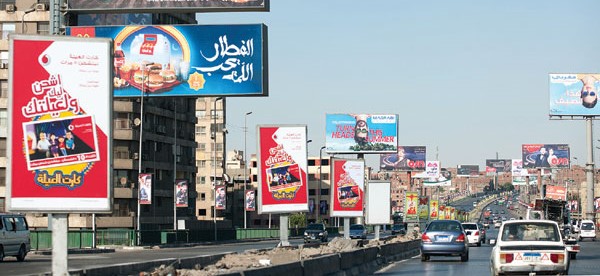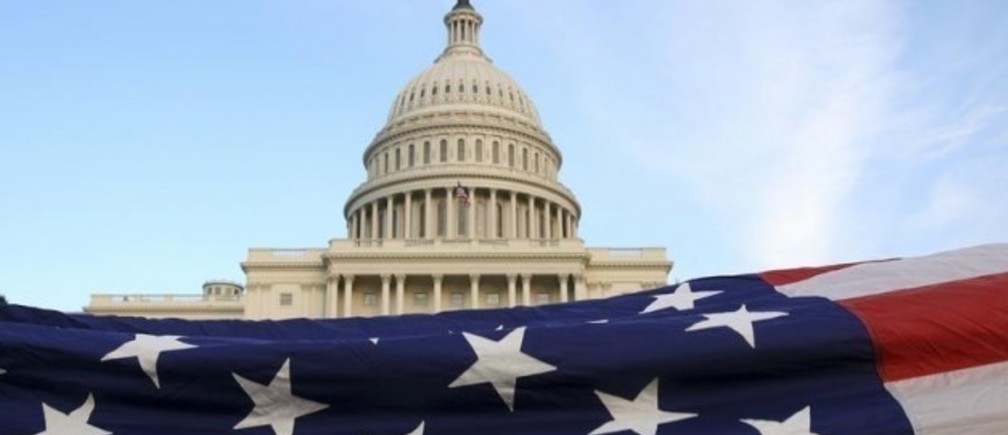“A common sight nowadays is billboards stacked on top of each other on any major road,” says Michael Joseph, an aviation corporate service manager. “It is too much noise. I don’t even bother looking at them anymore.” This scene didn’t exist a couple of years ago, but it is one that advertising agencies see as a natural extension of the oversaturation of the advertising market.
Mass advertising—commonly referred to as above the line (ATL)—has changed remarkably in the past decade. “A while back, there were relatively few ATL communication channels: television, print, and a little bit of radio. They have evolved slowly, but you always knew what worked,” says Paul O‘Donnell, advertising agency Ogilvy’s chairman and chief executive officer for Europe, the Middle East, and Africa. “You knew that if you invested this much here, you would get that much in sales.”
“I don’t believe there is any sophisticated company that would tell you it knows what works now,” he continues, “Modern marketing dynamics is like a game of Sudoku. There is a need to constantly experiment to find out what works, and even then it is still something that works for a relatively fleeting time, because the audience and channels always move on.”
Globally, the marketing industry is experiencing saturation, with TV and digital expenditures representing 36 percent and 37.6 percent, respectively, of total advertising spending, according to an article by Marketing Interactive. While advertisers stress that local patterns favor TV and billboards, it is difficult to determine precisely how much is spent on each. Karim el Tawil, marketing and business development director of Arma (a fast moving consumer goods company – FMCG) identifies the largest hurdle in Egypt as the scarcity of quantitative data. FMCG companies have their own tools to assess the performance of traditional mass media channels, whether TV, outdoor, or radio. They essentially end up with decades’ worth of trends, helping them to evaluate where and when to invest.
Egyptian companies had such tools for a couple of years. IPSOS, a global market research firm headquartered in France, conducted audience research on different television networks and made the results available to everyone. However, a court ruling in July 2017 closed the company’s office in Cairo. While the court order was due to safety concerns, many speculate the issue to be political in nature, reported Reuters. While the company still has a presence in Egypt, it no longer produces such data.
Despite the lack of statistics, “cultural insights are what ultimately matters when it comes to addressing the issue of breaking through the clutter,” says Patou Nuytemans, Ogilvy’s chief executive officer for the Middle East and North Africa region. “Every country is different. A company needs to make sure it understands the local consumer behavior, the local channels, and the new trends. Nothing will drive results if we can’t get the consumer’s attention.”
Stressing this point, O‘Donnell contrasts Egypt with the “fully mature Italian market,” where companies spend much less a share of the gross domestic product on ATL advertising than Egyptian companies. “It is the culture of the industry,” he says.
Standing Out through the Clutter
For Arma’s el Tawil, the level of noise and lack of quantitative data are not the only issues facing the industry in Egypt. “The key for a successful advertising campaign is fundamentals and, unfortunately, the industry is moving away from the basics.”
According to el Tawil, a successful advertisement needs three main factors: driving recall, brand retention, and intent of purchase. Recall comes from an emotional connection, whether it causes viewers to want to cry, reminds them of their childhood, or, more often than not, makes them laugh. “Next, in my opinion, comes what is being neglected, which is the potential benefit,” he explains. “It has become very rare to see an advertisement driving benefit-focused insight, which in turn does not trigger purchase intent. However, in terms of recall, a viewer remembers the advertisement, but can’t remember the brand.”
Amr el Kafrawy, senior brand manager for La Vache Qui Rit cheese, expresses a similar concern: “Creativity is important, however, as long as it doesn’t overshadow the brand. An example from last year, in my opinion, is Crunch chips. Everyone was talking about the advertisement and it generated a lot of traction online. However, many were unable to recollect what the brand was or the reason for the advert in the first place.”
On the other hand, Faragalla’s juice campaign last year tapped into all three fundamentals, according to el Tawil. It was designed to address the perception of the brand as substandard. “The company utilized the Egyptian belief that western products are of higher quality and launched a campaign highlighting that Faragalla exports juice to 70 countries, focusing on western markets strongly associated with quality, such as Germany and the U.K.,” says el Tawil.
Other than creativity issues, advertising clutter has generated a different set of challenges. One byproduct, for example, is brands canceling each other out, according to Fady Ramzy, chief executive officer of InsideOut Today, a digital marketing consultancy. This is most visible during Ramadan TV campaigns. Adding to this point, el Tawil notes the resemblance of last Ramadan’s telecom ads. “All three companies had the same format: a lot of celebrities,” he says.
Raising a similar idea, Rana Diab, senior marketing manager at City Edge Developments, says, “Outdoor advertising has reached the stage where people can no longer differentiate among advertisers.” This in turn forces all developers to work in parallel with other promotional mediums to [more effectively] connect with consumers. For Diab, the answer is going digital.
The Digital Pull
Many of those interviewed agree with Diab that current market dynamics are pushing advertisers to shift more attention toward digital channels.
“Most of what consumers do happens on [mobiles],” says Ogilvy’s Nuytemans. “Some studies say we see an average of 3,500 advertisement messages a day on digital channels, thus there is a huge amount of clutter out there. We need to make sure that when a consumer scrolls down a feed, he stops at a message from one of our brands because it grabs his attention, he watches it for more than a few seconds, and he takes action.”
In terms of figures, the Egypt Digital Report 2017 estimated internet penetration in Egypt at 48 percent with 45 million users online, 26.3 million of which smartphones. The 8th annual eMarketing report titled Digital Marketing Insights 2017 states 77 percent of all online activity involves social communication.
Social media channels have seen similarly high levels of Egyptian users. According to Facebook’s figures, the website has 37 million accounts from Egypt, with 59 percent of monthly active users returning every day. Instagram follows as the second most popular platform, according to the Egypt Digital Report 2017, with 2.7 million accounts. The Arab Social Media Report says Twitter has 1.7 million accounts from Egypt, while LinkedIn has 2.42 million users, 74.5 percent of them under the age of 35.
Furthermore, Diab estimates the average consumer spends eight hours a day online. “This makes digital advertising a valuable and powerful tool when reaching [potential buyers] in the real estate industry,” she says.
“It is clear how huge social media is in Egypt,” says Nuytemans. “It is a whole new medium that didn’t exist until recently, and I don’t think agencies have really embraced how to bring great ideas and great execution into the social media space.”
Due to the lack of data, it is difficult to estimate how much advertising companies spend on digital channels. El Tawil, however, doesn’t believe expenditure on digital promotion to be over 15 percent.
InsideOut Today’s Ramzy agrees. He believes most large corporations still direct the lion’s share of their budgets to traditional channels, such as billboards and print. “However, companies are making a slow but noticeable shift toward online advertising,” he says, singling out Coca-Cola as allocating a substantial share of its budget to digital marketing.
Moreover, the nature of the industry is a crucial factor, according to Ramzy. “Given the legal restrictions on its advertising parameters, the pharmaceutical industry has found a haven in digital marketing,” he says. For decades, pharmaceutical companies could advertise only over the counter medication, such as cough syrup and headache pills. “Online channels allow companies to create awareness campaigns for different diseases, without mentioning specific medication,” he explains. “They are spending millions now to have celebrities be brand ambassadors, such as Essam el Hadary with Panadol. None of this existed previously. Digitally, they can do more; and there is continuity to the campaign that they can’t replicate cheaply using conventional advertising.”
For Diab, when it comes to building brand awareness in real estate, digital marketing can’t replace conventional advertising. Nevertheless, it is still a crucial tool for the sector because “through customization, monitoring, flexibility, and an ability to incorporate more messages, digital advertising reaches more people and helps build brand trust; it offers a number of different solutions that help developers cater to the varying needs of their target audience,” she explains.
Ramzy adds that real estate companies targeting foreigners, especially those offering property on the Red Sea, benefit more from promoting on social media as they can easily reach target users in other countries.
A huge contributing factor to the rising importance of digital platforms is Egypt’s demographics. As of August 2018, Egyptians younger than 15 years old and those between the ages of 18 and 29 combined constitute 52.3 percent of the population of 93 million, according to the Central Agency for Public Mobilization and Statistics. Ramzy believes youth are shaping the direction of local social media.
One prime example of the market response to the growing number of youth is “influencers on Instagram,” he notes. “The number of makeup, fashion, and cooking businesses are quickly rising and brands have noticed and begun endorsing them.”
“It is no longer good enough to put your TV spot on your social media channel; it is a very different platform,” says Nuytemans. “You need great, engaging ideas and you need to be part of the local culture, understand consumer behavior and trends.”
Why Mess With the Classics?
TV has the highest penetration rates in Egypt, reaching a whopping 95 percent, according to a report by Oxford Business Group titled “Advertising expenditure on the rise in Egypt.”
However, as Ogilvy’s chairman O‘Donnell puts it: “It would be wrong to suggest that TV hasn’t lost significance in terms of the overall mix. In many ways, though, it is still one of few guaranteed ways to reach a mass audience.”
“I think we know from economic behavior studies that sometimes you can influence the perception of [a brand’s] quality, reputation, and support by having a non-targeted media strategy, as long as you define your target in broad terms, and that is where TV comes in,” O’Donnel adds.
La Vache Qui Rit’s el Kafrawy raises several concerns that may hinder the penetration of traditional mass communication. “TV rates are rising yearly by an average of 25 percent, he says, “and accordingly it is cost effective for companies to shift toward different means of engaging consumers.”
“As for billboards, you can never measure the return on investment,” el Kafrawy adds. “How can you quantify the number of people who saw your advertisement and took action?” Digital marketing, he explains, it is more cost efficient, results are quantitative, and there is clear segmentation by interests, behavior, and even hobbies.
“However, this does not negate the need to advertise on TV and billboards, due to their broader reach. Moreover, a brand shouldn’t put its eggs in one basket. We need to ensure a comprehensive 360-degree campaign,” he adds.
For el Tawil, it is all qualitative; “Each one will tell you their own evaluation of the situation. None of us can quantify what is important.”
In addition, he believes that brand and target market determine the ideal means of communication. “For example, with FMCGs you are targeting the masses, and nothing trumps TV for you,” el Tawil says.
“A deeper layer that also needs to be considered is the weight of each channel and how it relates to the strength of the brand’s equity,” he continues, citing Juhayna as an example. “A longstanding FMCG that invested decades into building its brand can afford to reduce spending on expensive TV campaigns and maintain momentum through digital media. Other brands serving the same product line can’t follow suit. They need the influential power of a TV campaign.”
Message Received?
From the perspective of viewers, interviews highlight four main trends, the first of which was a lack of focus when it comes to TV advertisements. “For me, TV is something I turn on in the background. Rarely am I only focused on watching as I am always doing something else in parallel,” says Joseph, the aviation corporate service manager.
Similarly, Mohamed Magdy, an accountant, prefers “to use commercial breaks to check his phone, make quick calls, and such.”
Addressing this issue, el Tawil says, “I think it’s about the elements considered when crafting the piece. For a busy housewife blasting the TV in the background, music is an element that might attract her attention even if she is not looking at the commercial. Working on the right mix of sensory triggers is very important; it counteracts the need to focus 100 percent on the advertisement. This would build a link and drive recall.”
Recall was the second trend. When asked about the last advertisement that grabbed her attention, Heba Fawzy, a construction engineer, sang part of a song. She could not remember the brand, but given the lyrics she believes it was probably a telecom advertisement.
Two other viewers interviewed gave a similar response. “The last advertisement that captured my attention was a juice campaign repeated several times on 6th of October bridge, it had a girl or a boy drinking juice with their features made more prominent,” says Joseph, though he couldn’t remember the brand.
Companies sometimes lose clarity about the purpose of the advertisement. “Fundamentally, it is all about the insight that is built on the benefit,” says el Tawil. “Once you lose clarity on this, the piece becomes nothing but 30 seconds of entertainment.”
Thirdly, the presence of celebrities has proved to be an attention grabber. “I don’t really focus on billboards, and I think they are a huge distraction. But I like Neymar, that’s why it’s the only advert that grabs my attention,” says Fawzy. Joseph singles out Orange’s advertisement with Abou Hafiza as the only advertisement he didn’t skip when it popped up on YouTube.
Similarly, digital campaigns face challenges in securing the full focus of viewers. Magdy, for example, uses an application that blocks YouTube advertisement breaks. While Joseph says he always skips advertisements playing on the platform, describing them as a “nuisance.”
For O’Donnell, none of this is surprising or necessarily negative. It is simply a byproduct of the high level of competition in the market, “and these competitors are also always innovating new ways to do things. It makes for a very difficult environment, but quite a crazy and inspiring one as well,” he says. “The only way to win the game is to know more about the options and to be really courageous in how you mix things up.”







